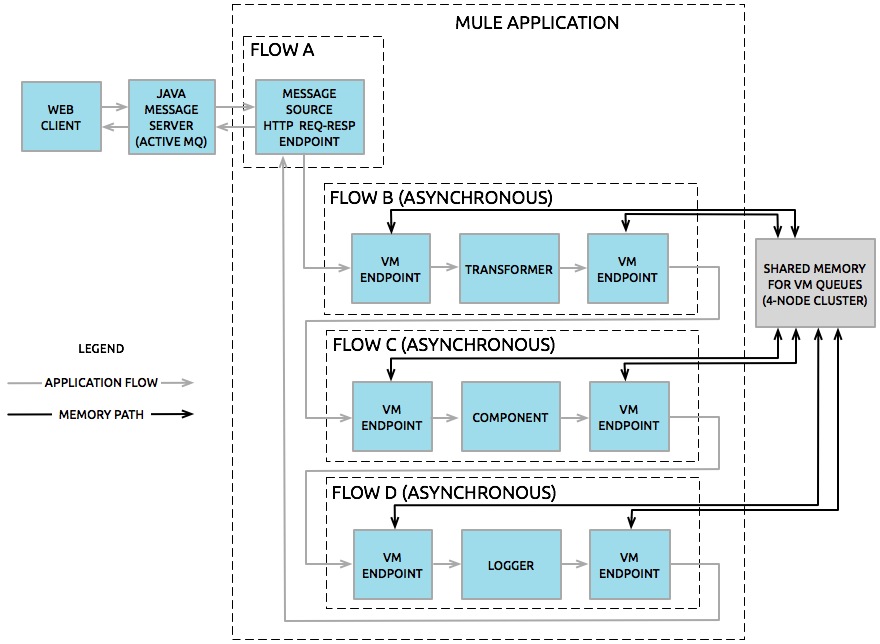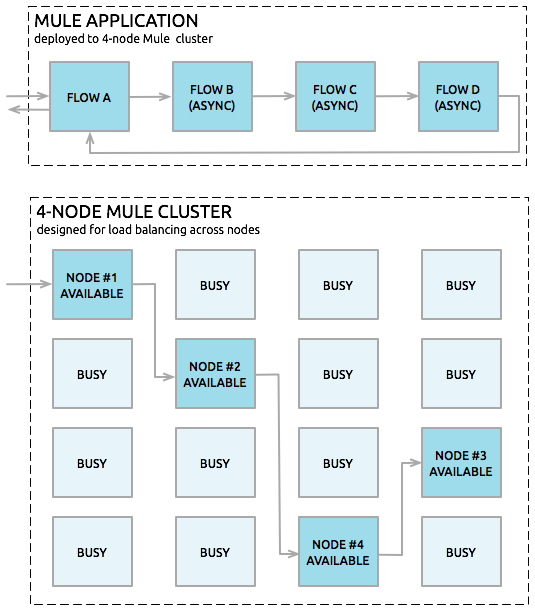
Flow Architecture Advanced Use Case
By judiciously combining the architectural options and product features available in Mule, you can, with a minimum of development effort, design and create powerful, robust applications that precisely fit your needs.
The application pictured below leverages multiple flows, two types of queues, clustering, and load balancing to create a Mule application that facilitates all of the following:
-
high throughput
-
high availability
-
high reliability (transactionality)

How It Works
The application builds upon a request-response exchange pattern, in which Web clients submit messages (requests), then wait for responses from the application.
In this particular topology, a Java Message Server (JMS) sits between the clients and the application, receiving messages as they are submitted and managing them using Active MQ, a messaging queue that performs the following:
-
keeps track of every submission
-
forwards messages to the application in the order they were submitted
-
makes sure that the application provides a response to every message within a specified timeout period
-
forwards each response the appropriate sender
Since the JMS sits outside the application, it is relatively slow compared to the application, which runs on multiple threads within a cluster of Mule nodes. Also, it does not have direct visibility into the success or failure of the individual message processing events within our application. Nevertheless, the JMS provides a form of “high-level transactionality” by ensuring that a response is received for each message.
Within the application, an HTTP endpoint set to the request-response exchange pattern serves as both the application’s message source (i.e. inbound endpoint) and its outbound endpoint, dispatching a response to each sender by way of the JMS.
The message processors within the application are segregated into four flows. Each asynchronous flow runs on a separate thread and begins and ends with a VM endpoint. These VM endpoints share memory through a VM queue. If any of the asynchronous flows fails to execute successfully, the VM queue reports this, thus ensuring a type of flow-level transactionality known as high reliability.
The application has been configured through the Mule Management Console to be deployed and run on a four-node cluster. If any of the nodes go down, one of the others picks up the processing load, thus ensuring high availability. As the following diagram illustrates, even if none of the nodes go down, the asynchronous flows can be processed on the next available node. This type of automatic load balancing promotes high throughput.

See Also
-
Read about some alternative ways to control message processing within a flow using routing message processors.
-
Refer to the Flow Reference Component Reference and Async Scope.
-
Read more about Flow Processing Strategies.
-
Read more about setting up transactional units in Mule applications.



